
When it comes to listings and review sites like Google Business Profile, Yelp, and Facebook, if you haven’t claimed your business profile, you’re losing money.
And no one wants to lose money.
Did you know that “90% of consumers used the internet to find a local business in the last year, with 33% looking every day”? (BrightLocal 2019) And if you aren’t controlling what they’re seeing about your business, who is?
In this article, we’ll be covering the why, where and how of claiming your business (or nonprofit) online.
Let’s face it — listing management and reviews are a huge, and very important, part of your online marketing. In fact, it is one of the five key elements of a strong digital marketing strategy!
Where business listings and reviews fit into your online marketing strategy
If you haven’t read our online marketing guide, The Download, yet, the five key elements for a good online (or digital) marketing strategy include:
- A mobile-friendly website
- An email marketing tool
- A primary social media channel
- Up-to-date business listings
- A way to easily create content

But I digress. Today, we’re talking about the fourth element; up-to-date business listings.
Let’s start at the beginning. We’ll work our way through the basics of online listings and reviews, from claiming your business online, managing your listings, and responding to customer reviews.
What are listing and review sites?
The best way I can describe these sites is that they’re a cross between an online phone book and a collection of critical reviews.
Let me expand upon that thought.
An old-fashioned phone book housed basic business information — where a business is located and its phone number. If a business paid for an ad, then it might also include business hours and perhaps some information on a specialty or something else that the business owner wanted to convey to potential customers.
And a business’s reviews used to be determined by a small number of critics. If you happen to own a restaurant, then you’re certainly familiar with food critics — where a writer comes to your restaurant, and critiques everything about their visit. The next day, there’s a write-up in the local paper, telling everyone what they thought of your restaurant.
Now that the world has gone digital, the phone book is replaced by online listings, everyone is a critic, and every business can be critiqued at any time.
Let me state that again:
In today’s digital world, everyone is a critic, and every business can be critiqued. (Tweet this!)
What’s more is that “90% of consumers used the internet to find a local business in the last year, with 33% looking every day.” (Womply Research)
With that in mind, it’s important to know what’s being said about your business, and it’s imperative to control what you can.
One way to control the information about your business, that exists online, is by claiming your business.
Claiming your business is merely a process of letting a listing and/or review site know that you own a specific business.
Claiming your business listings
Quite often, if a business is listed online but not claimed, it’s because a customer entered the information after visiting the business. And if you’re lucky, they entered it correctly.
So, if your business is listed, and all of the information is correct, why do you need to claim it?
The most important reason for claiming your business is: When a business is listed online but hasn’t been claimed by the owner, anyone can enter information on that business.
Where to claim your business
As one of our Harness the Power of Listings & Reviews webinar attendees pointed out, there are literally thousands of listing and review sites online. So, how do you know which one(s) to claim your business on?
Start with the top three to five sites.
Why the top three to five? Because “businesses that claim their free listings on at least 3 review sites earn 36% more revenue than average [and those] that claim their free listing on at least 4 review sites earn 58% more revenue.” (Womply)
The big three listing and review sites:
Due to their amount of use and traffic, these are the sites that are a must when it comes to claiming your site.
1. Google Business Profile
If you only have time to claim your business (or nonprofit) on one site, this is the one you need to make sure to get done. On average, Google processes over 40,000 search queries every second. It is indisputably the most-used search engine in the world, with approximately 90% of the worldwide market.
And when a potential customer searches for your business on Google, the results generally look something like this:
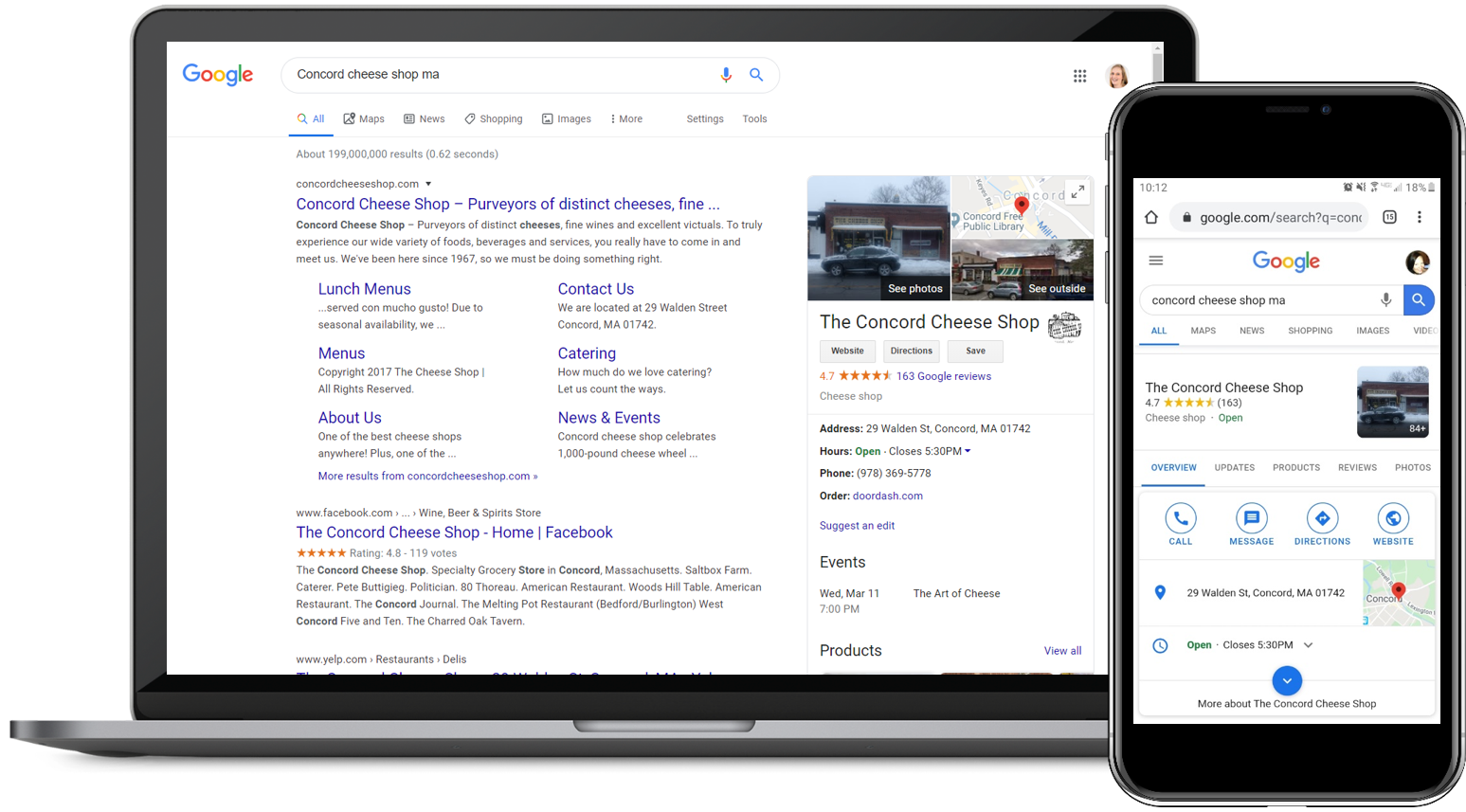
This is free advertising on the largest search engine in the world — I don’t know about you, but I can’t afford to pass that up.
2. Facebook
As online review sites go, Facebook is the second most-used platform behind Google Business Profile, with approximately 85.57 million average monthly U.S. traffic.
While Facebook is usually thought of as mainly a social site, setting up a business page on Facebook has a lot of benefits. Besides providing a platform where you can connect with your customers, it’s also a place where customers can rate your business.
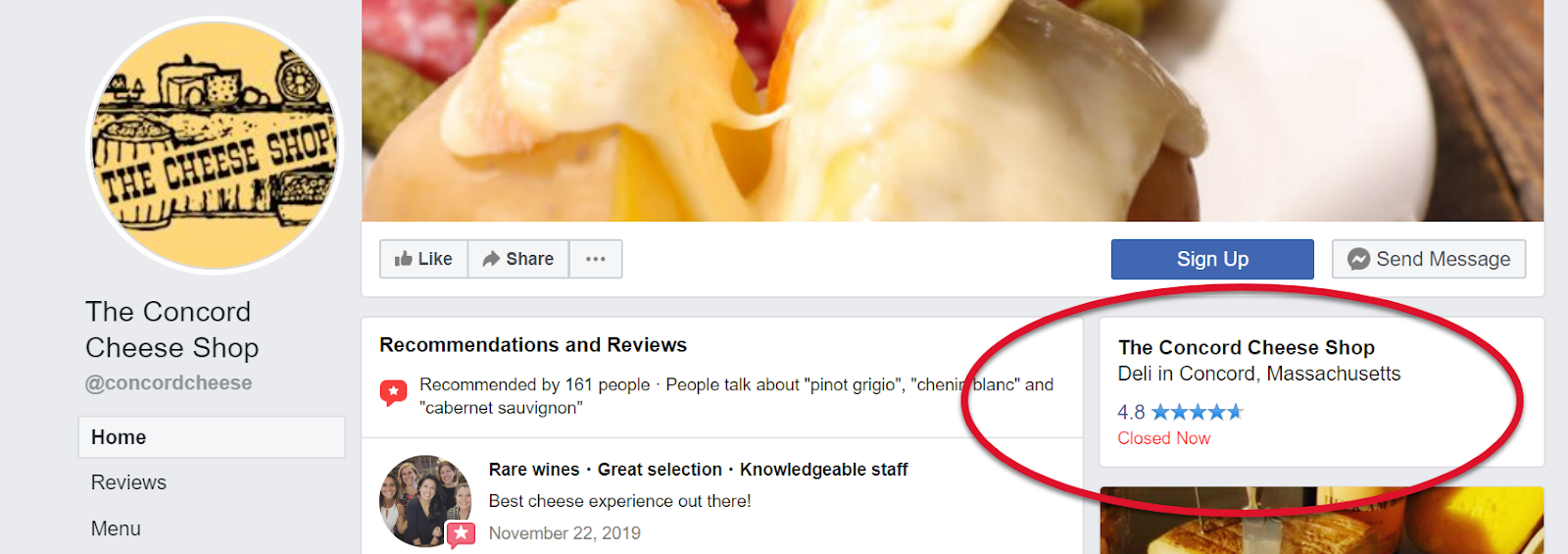
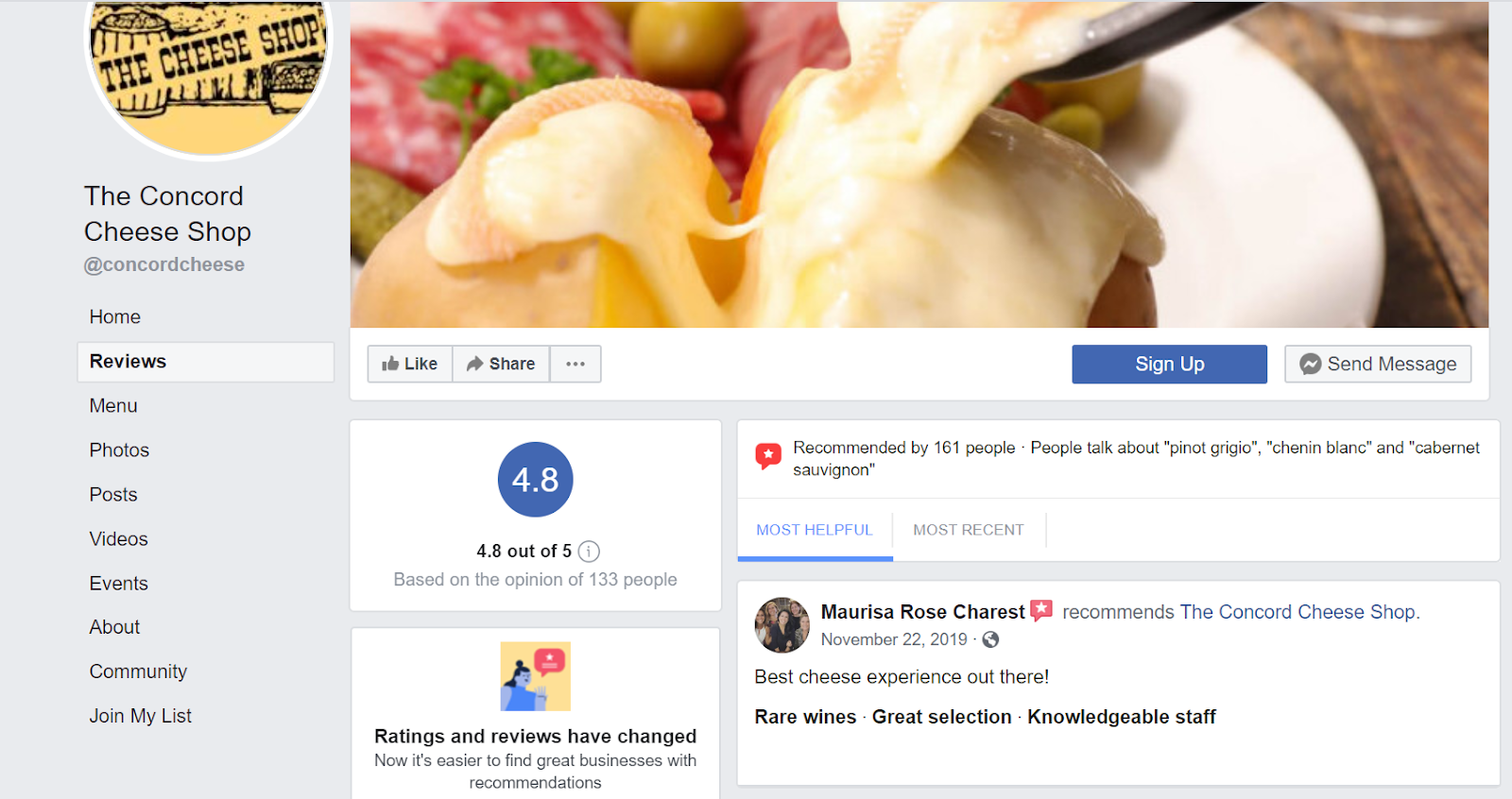
In addition to Facebook’s review and rating capabilities, when searching for your business online, your Facebook business page always shows up second in the list.
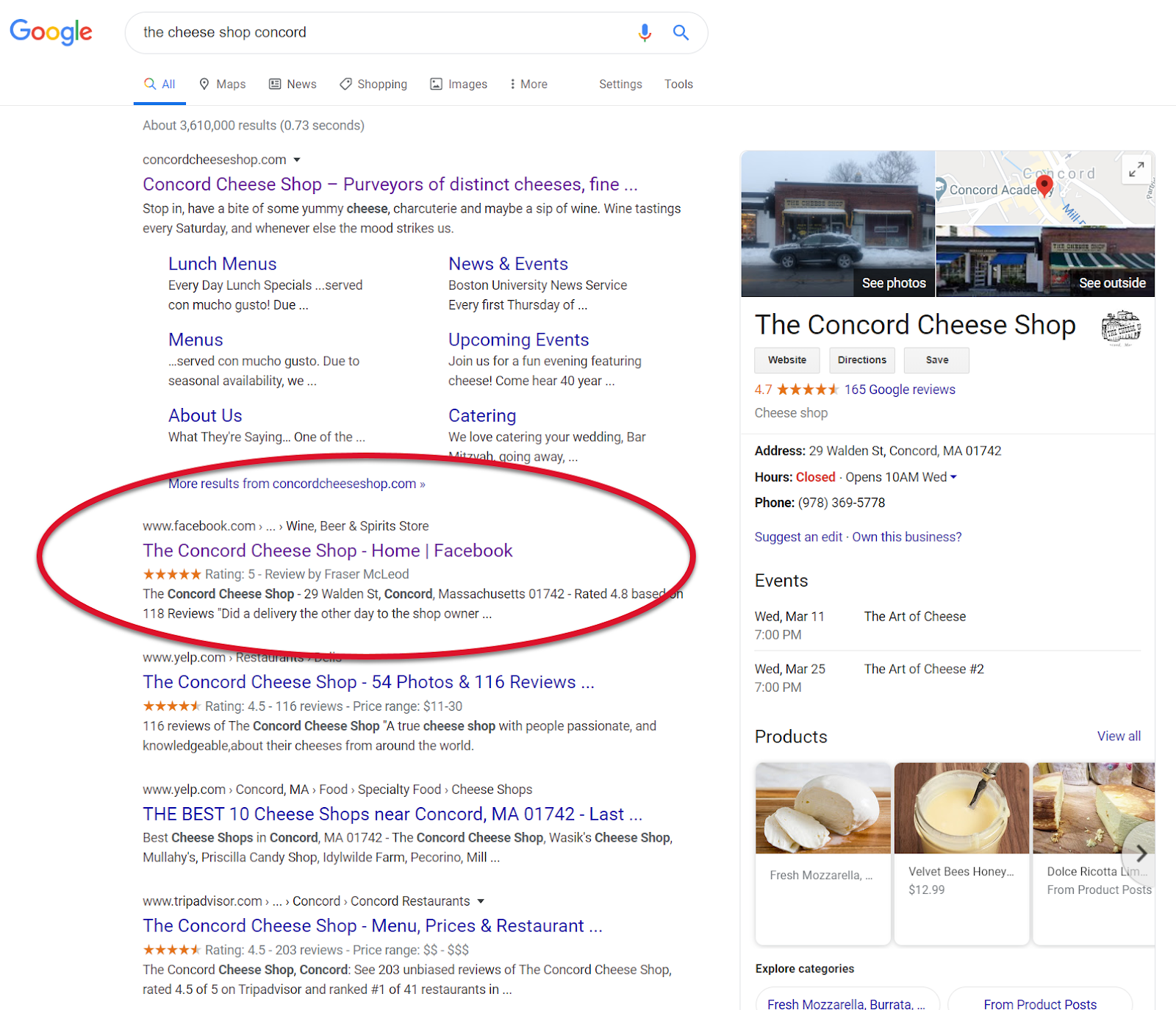
Did you notice what page shows up third? Yep, that would be Yelp!
3. Yelp.com
With just over 15 years of crowd-sourced reviews under their belt, Yelp is still one of the most trusted review sites in the U.S. Any and every business can and should be listed with Yelp.
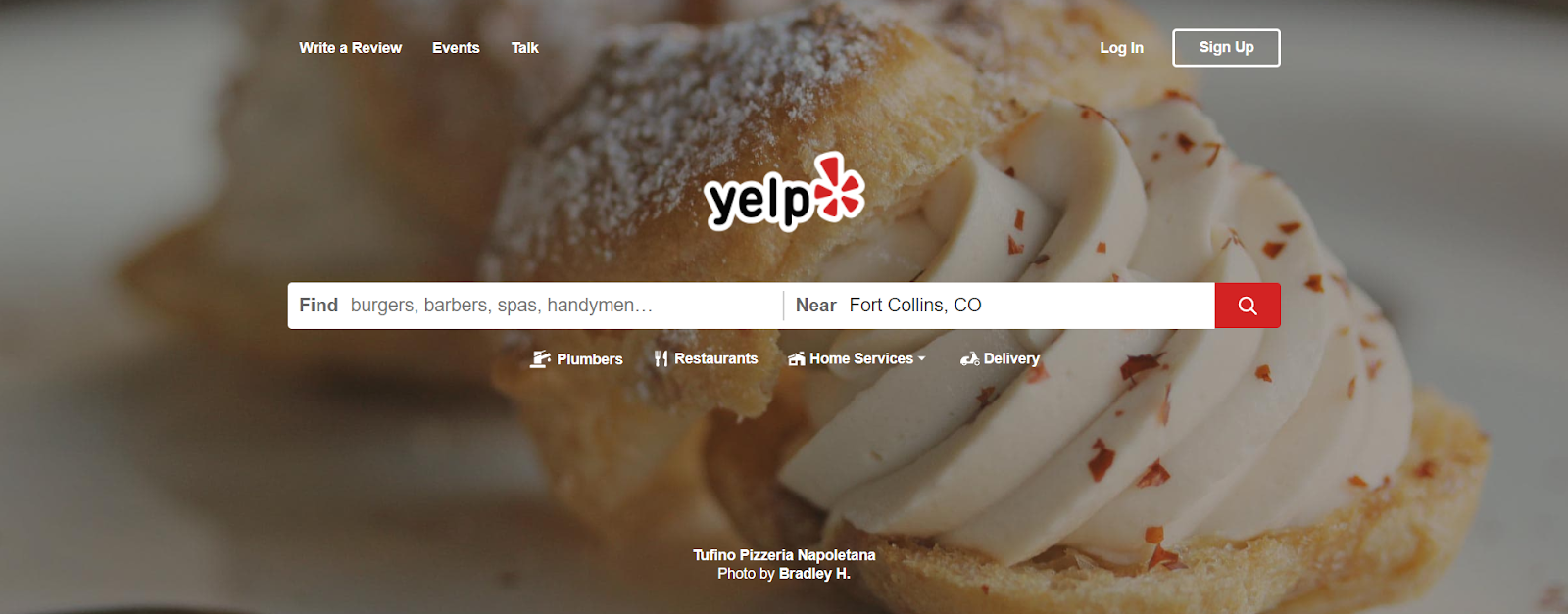
Additional listing and review sites
You should definitely take the time to claim your business on all three sites, but don’t stop there.
In addition to the big three, you should also be sure to claim your business on the top listing site for your industry, if not the top two.
What if I don’t know of a listing site for my industry?
Don’t worry. With as much information that’s on the internet now, you can bet that there’s a listing site for your industry, and quite possibly even your particular niche. And it’s surprisingly easy to find listing sites for specific industries, including nonprofits. Just Google it. Yep. I said, “Google it.”
After all, potential customers will be doing a search for your industry, so why shouldn’t you?
So, search for phrases like, “home services directory” and see what sites come up. Also, search for your business industry like, “hair salons near me” and choose any listing. On Google, you can then open up the map view, scroll down to “Web results” and see where your competitors are listed.
Some other top places to claim your business include:
TIP: Make sure that you’re on the map. Since the iPhone is one of the most used smartphones in the world, Apple Maps is working its way up the ladder. However, it’s still mostly a map provider, albeit with better imagery than Google Maps. If you want to read a review on a business, you’re taken out of the Apple Maps apps and [sent] to Yelp, TripAdvisor, or Foursquare.
How to claim your business
Each listing site is different, but the basics for claiming your business are pretty much the same.
- Search for your business on the listing site of your choice.
- If found, claim your business.
- If not found, add your business.
- Fill in your business information.
Unfortunately, since each site is different, no two have the same exact process for claiming your business listing. Let’s look at how the process varies across some of the top sites.
1. Google Business Profile requires that you go to their business page in order to manage your business listing with them.
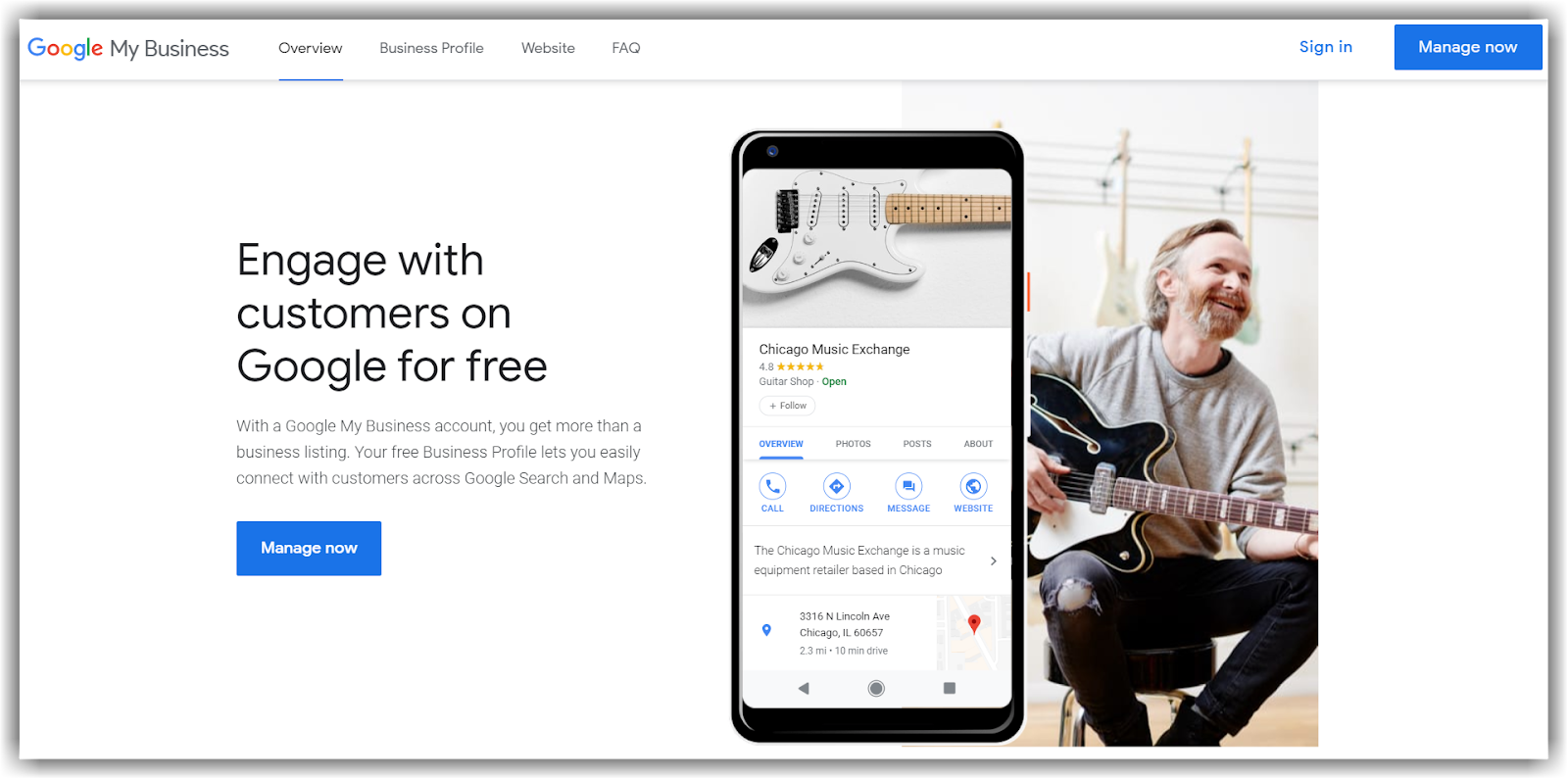
2. Facebook makes creating a business page super easy. And while you can create a business page while logged into your personal page, I recommend that you go directly to the setup page instead. It’s a cleaner, easier way to set up a Facebook business page.

3. Yelp, in my opinion, is the easiest site to claim your business on since you can add a new business right on the search page.
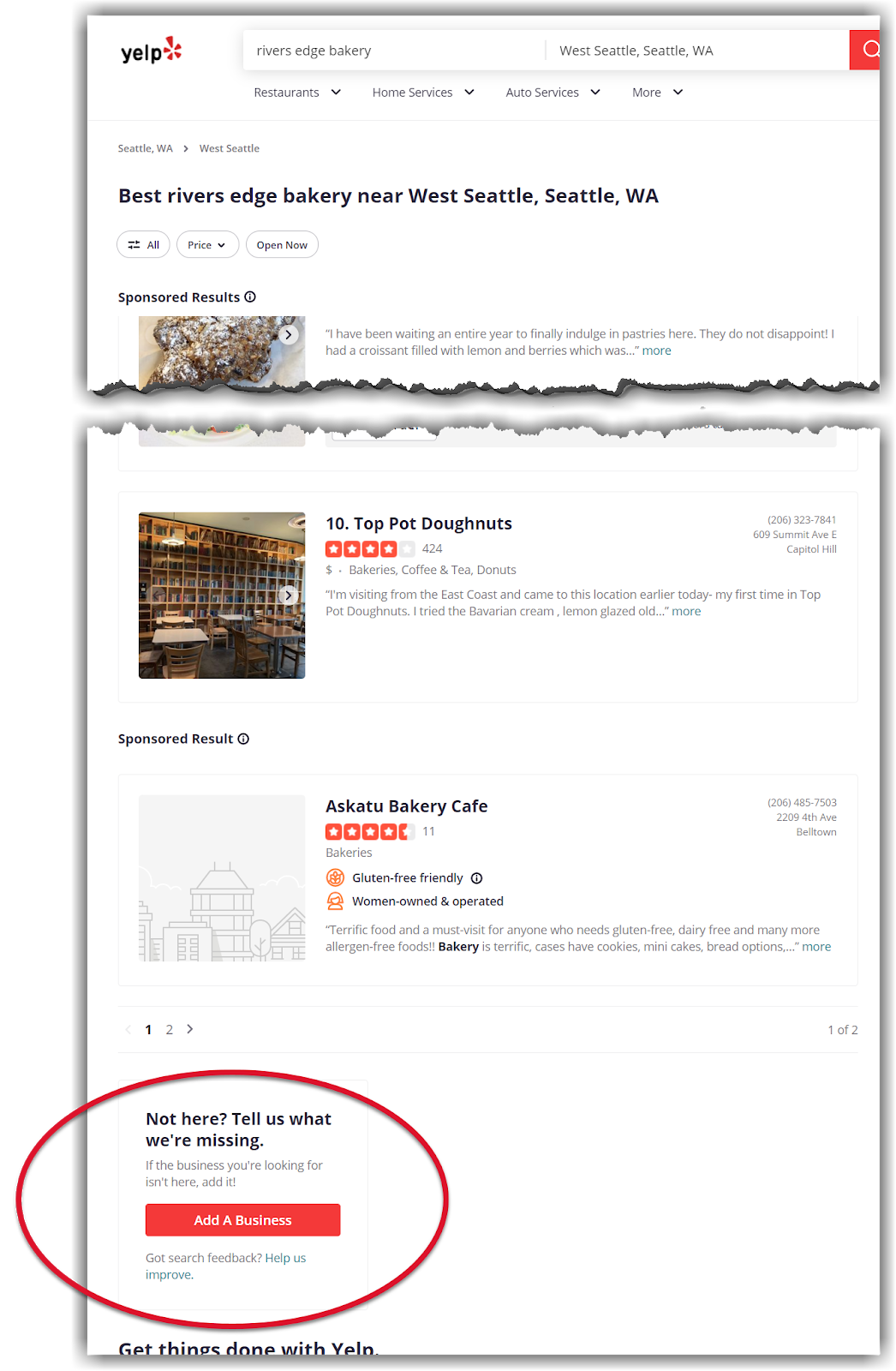
And if your business is already listed, you can click on the listing and then claim your business there.
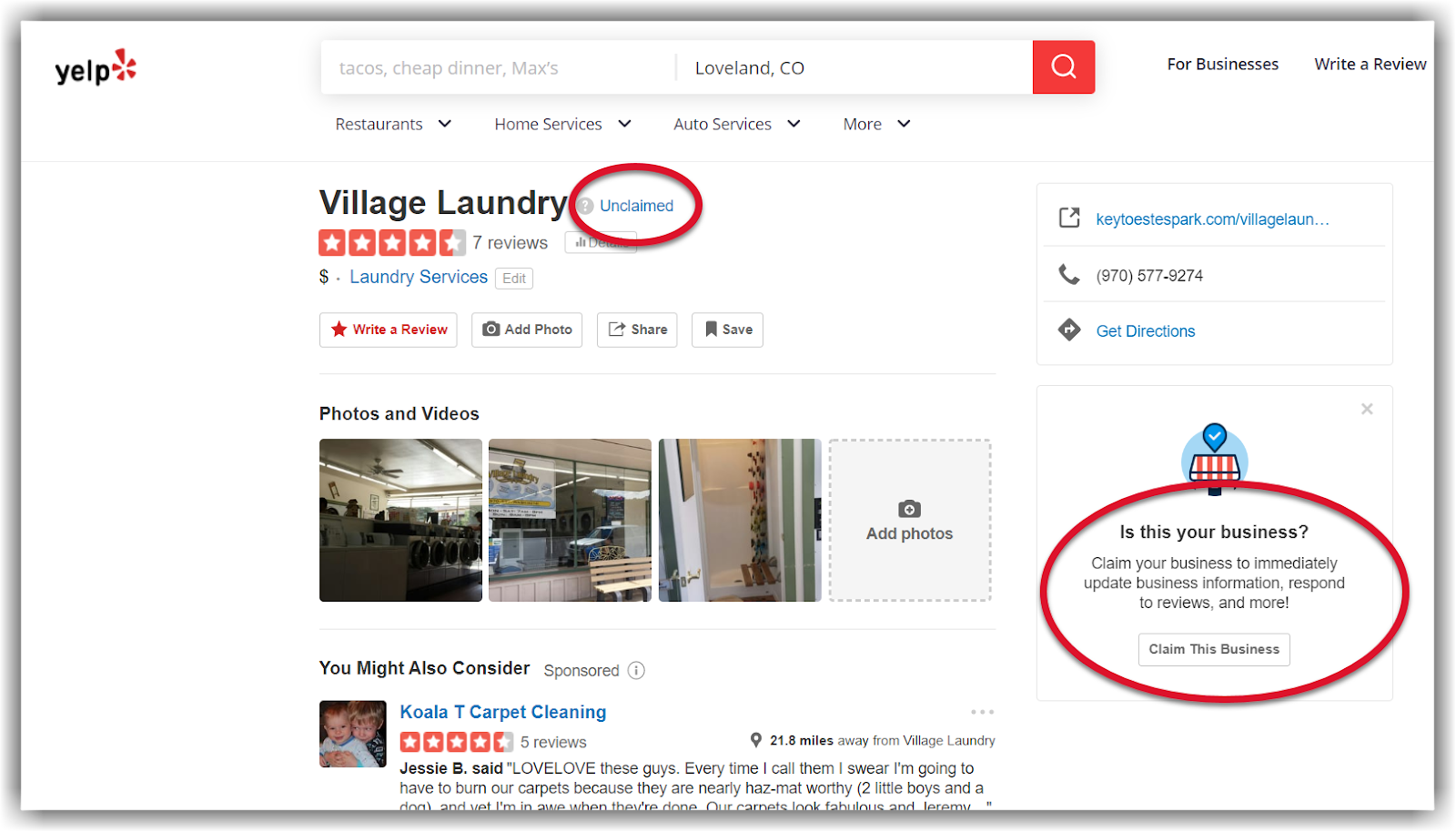
Just follow the directions.
That’s the big three sites and most others that I’ve found generally follow one of those three processes for claiming your business.
When on the site of your choice, just look for CTAs (calls to action) that have words and phrases like; “claim”, “manage”, “get leads”, “join”, and “list”. And while I’m certain there are other clever CTAs out there…well you get the idea.
Managing your listings
Claiming your business listing isn’t just about making sure that the business name is spelled correctly, the address and phone number are correct, and that your business hours are listed. It’s about engaging your customers and enticing new customers.
And while you start by making sure that all of the information on your business is correct in each listing, you also need to add photos and menus, post specials and specialties, fill out a brief business description, add links to your website, list any amenities your business has, maybe add videos, and more.
Business listings are basically a social profile for your business, only they require more information. And while you don’t have to fill out all of the available fields, you should.
The more information that’s on your business profile, the more trustworthy your business or nonprofit appears.
Let me show you what I mean.
If you just look at the first page of these two listings, which one would you be more inclined to do business with?
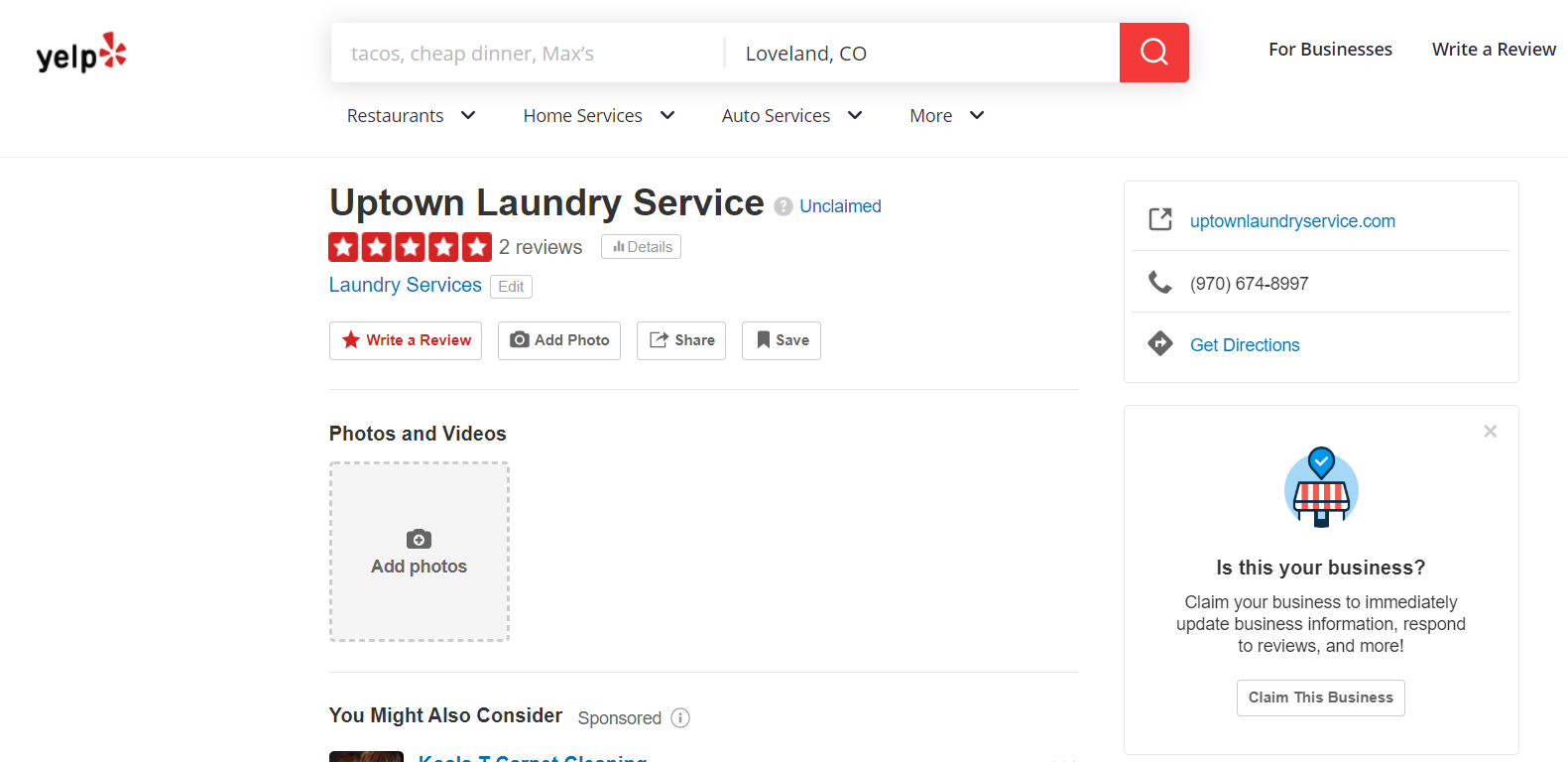
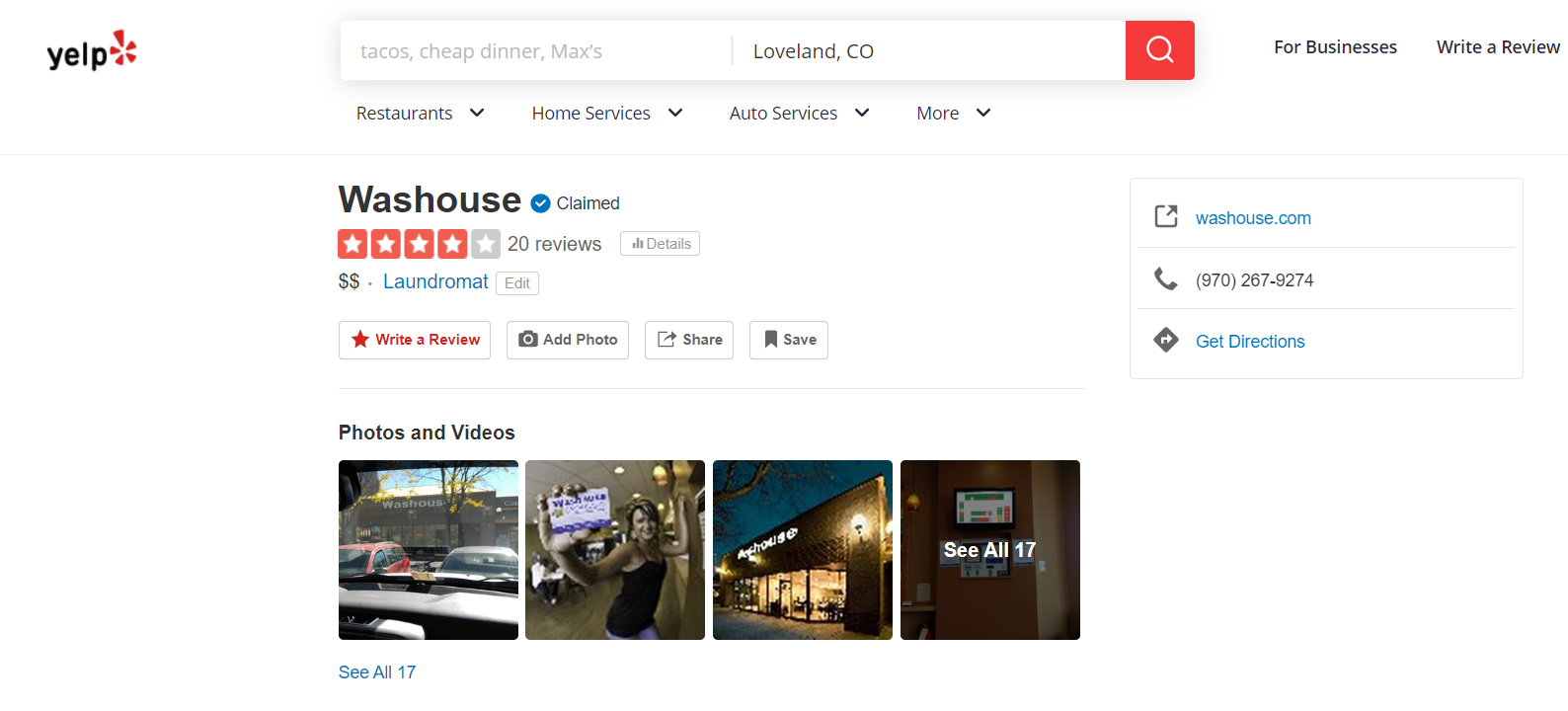
One thing that I’m constantly telling people is that “consistency is key”. This goes for email marketing, social media marketing, business websites — basically all digital marketing across the board.
In order to make the most of your online business listings, make sure that the information you share is the same on each site. So, make sure everything is spelled and typed in exactly the same way every time (I suggest using a cheat sheet in a word processor like Microsoft Word or Google docs to help with this).
TIP: Maximize your business listings by periodically updating images and posting special events, discounts, and specials — just like you would on your social media sites.
What to do about reviews
Don’t be afraid of reviews. They’re your friends. Both positive and negative. You want as many honest reviews as you can get, so if you aren’t already asking for reviews, you should start.
What really matters with reviews is how you handle them.
You should always respond to your reviews. Let me say that again —
Always respond to your reviews.
Here’s why:
According to BrightLocal’s Consumer Review Survey 2019,
- 82% of consumers read online reviews for local businesses, with 52% of 18-54-year-olds saying they ‘always’ read reviews.
- The average consumer reads 10 reviews before feeling able to trust a business.
- The average consumer spends 13 minutes and 45 seconds reading reviews before making a decision.
- Among consumers that read reviews, 97% read businesses’ responses to reviews.
The key to responding to reviews, both positive and negative, is to start out by thanking the customer for their feedback. Let them know what they think is important to you. Beyond thanking them, be sure to address their remarks, specifically. And if you remember the customer, let them know that.
The most important part of responding to reviews is to be professional, upbeat and positive, and thankful that they took the time to provide feedback.
And if you think that you don’t have time to respond to reviews, keep these stats in mind:
- Businesses that reply to more than 25% of their reviews earn 35% more revenue than average.
- Businesses that don’t reply to any reviews earn 9% less revenue than average.
Handling bad reviews
Did you know that businesses with a rating between 3.5 and 4.5 stars earn more revenue than businesses with any other rating? And that businesses with 5-star ratings earn less in revenue than 1 to 1.5-star businesses? (Womply)
That means that bad reviews are as important as good reviews, if not more important. Hurray for bad reviews!
I’ll admit it. I’m human. And sometimes a bad review feels like a personal attack.
So, if a bad review gets you down, take a moment before you post a response. And before you hit that “publish” button, make sure that your response is upbeat, thankful, apologetic (when necessary) and proposes a solution. And you can always ask the customer to contact you so you can have an opportunity to make it right.
As Aastha and I mention in our article on how to Grow Your Business with Yelp, “negative reviews are really positive feedback that you can use in order to improve your services or product…And if you respond appropriately, you can use reviews to build relationships.”
And that’s what having a small business is all about — building relationships.
Listing and review sites give you another opportunity to build relationships — and turn potential customers into lifelong customers.
Ready to claim your business? I recommend starting with Google. Learn How to Create a Google Business Profile and start taking control of your online listings.




